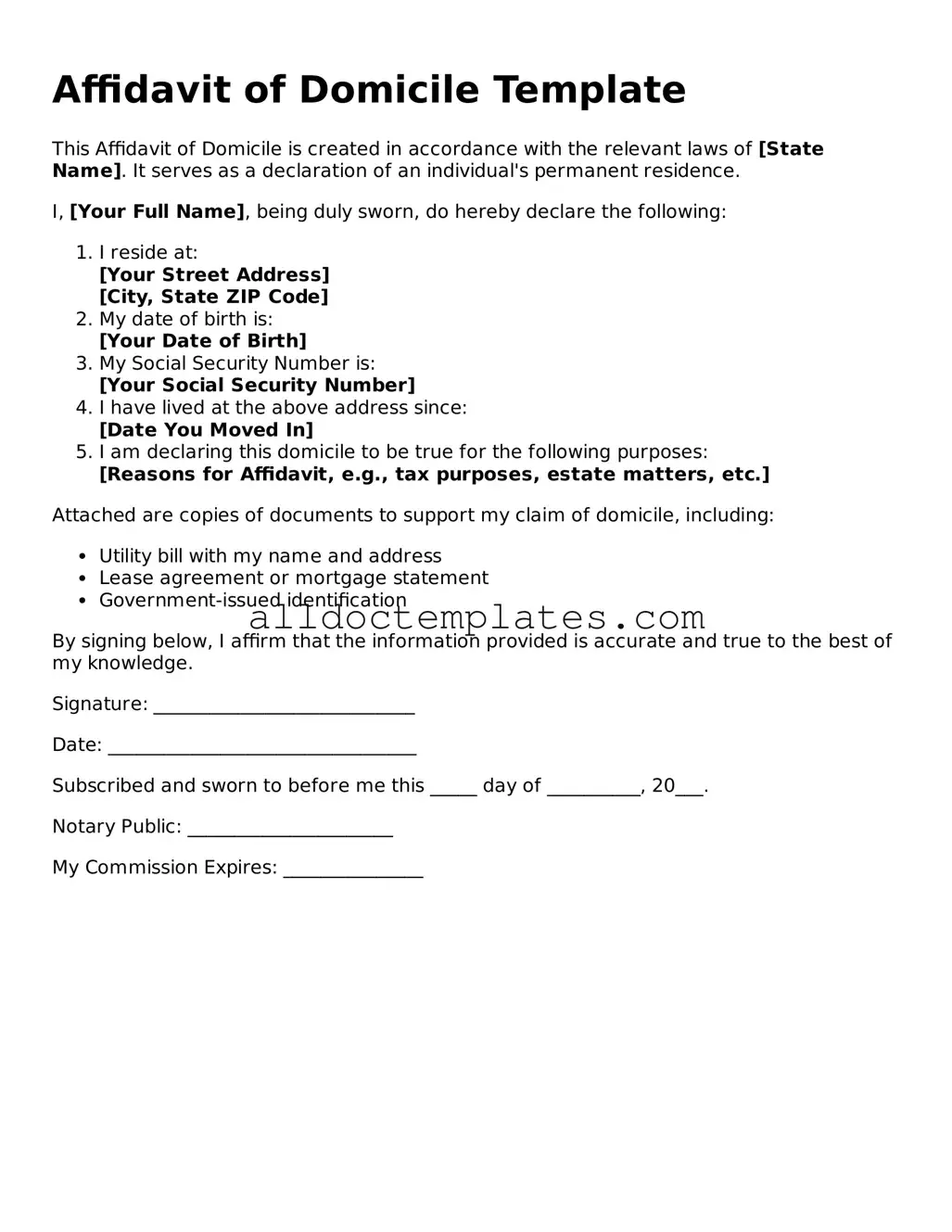Affidavit of Domicile Template
This Affidavit of Domicile is created in accordance with the relevant laws of [State Name]. It serves as a declaration of an individual's permanent residence.
I, [Your Full Name], being duly sworn, do hereby declare the following:
-
I reside at:
[Your Street Address]
[City, State ZIP Code]
-
My date of birth is:
[Your Date of Birth]
-
My Social Security Number is:
[Your Social Security Number]
-
I have lived at the above address since:
[Date You Moved In]
-
I am declaring this domicile to be true for the following purposes:
[Reasons for Affidavit, e.g., tax purposes, estate matters, etc.]
Attached are copies of documents to support my claim of domicile, including:
- Utility bill with my name and address
- Lease agreement or mortgage statement
- Government-issued identification
By signing below, I affirm that the information provided is accurate and true to the best of my knowledge.
Signature: ____________________________
Date: _________________________________
Subscribed and sworn to before me this _____ day of __________, 20___.
Notary Public: ______________________
My Commission Expires: _______________
